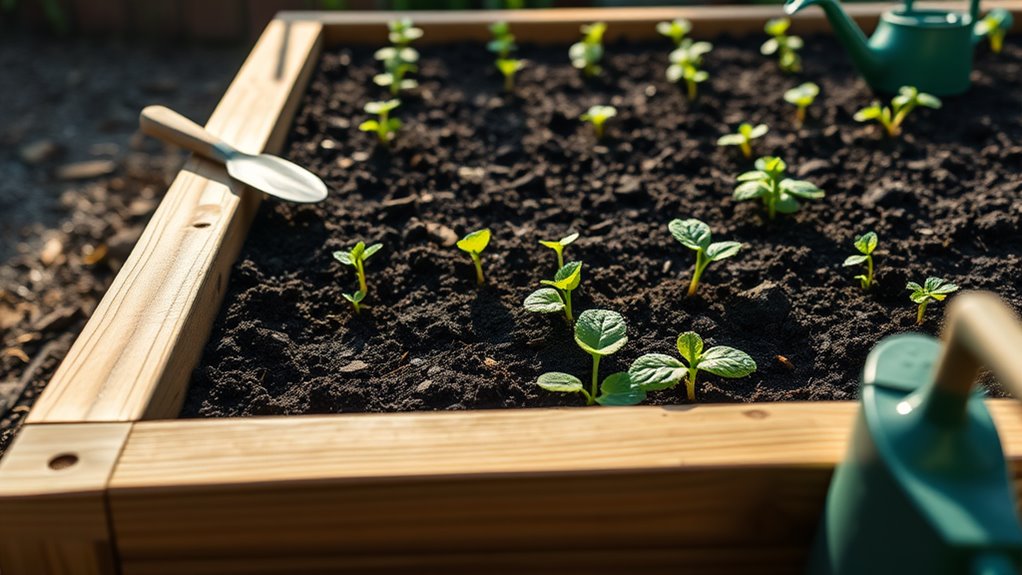The Beginner’s Blueprint to Starting a Vegetable Garden
You’ll transform your first vegetable garden by planning a layout that maximizes sunlight and arranges plants by height for ideal growth. Prepare your soil by testing pH, adding compost, and tilling deeply to boost fertility. Select beginner-friendly veggies like tomatoes or spinach that match your climate and space. Plant seeds properly, space them out, and water at the base weekly. Keep up with pest checks and adjustments, and soon you’ll uncover even more practical steps for success.
Planning Your Garden Layout
Before you start on planting, plan your garden layout to maximize space and yield.
Incorporate key vegetable gardening tips by evaluating sunlight exposure first; you’ll guarantee best growth for crops.
Sketch a detailed map, arranging plants by height—place tall ones like corn at the back—and use companion planting, such as basil with tomatoes, to deter pests.
Allocate paths for easy access and consider vertical structures for climbers, boosting efficiency and harvest. Additionally, soil preparation is crucial for ensuring your plants thrive, as it provides the necessary nutrients for healthy growth.
Preparing the Soil for Planting
Once you’ve mapped out your garden layout, focus on getting your soil ready for ideal plant growth.
Start by testing your soil’s pH and nutrient levels with a home test kit to identify deficiencies.
Use the results to add compost or fertilizers, improving fertility.
Till the soil to a depth of 12 inches to aerate it and remove weeds.
If drainage is poor, incorporate sand or perlite.
Finally, apply mulch to retain moisture and suppress weeds. Additionally, consider performing a nutrient assessment to determine the specific amendments needed for your plants’ success.
Selecting Vegetables for Your Garden
Choosing the right vegetables for your garden sets the foundation for a successful harvest, so start by evaluating your local climate, soil conditions, and available space.
You’ll want to select varieties that match your growing zone, like heat-loving tomatoes or cool-season greens such as spinach.
Consider your family’s tastes, ease of growth for beginners, and space requirements—opt for compact plants in small areas to secure a bountiful yield. Additionally, focusing on easiest vegetables can significantly enhance your gardening experience and boost your confidence as a new gardener.
Planting and Watering Techniques
With your vegetables selected, dive into planting and watering techniques to kickstart your garden’s growth.
When planting, dig holes twice as deep as the seeds or root balls, space plants per variety instructions to prevent overcrowding, and firm soil gently around them.
For watering, apply one inch weekly, targeting the base to avoid wet foliage; use a soaker hose in early mornings to minimize evaporation and promote deep roots. Watering in the early mornings helps ensure your plants receive adequate moisture before the heat of the day causes evaporation.
Ongoing Care and Troubleshooting
After planting and watering your vegetables, you’ll maintain their health by monitoring the garden weekly.
Inspect plants for pests like aphids and treat them promptly with organic sprays. Watch for disease signs, such as yellowing leaves, and remove affected areas to prevent spread.
Weed regularly to reduce competition, and adjust watering based on soil moisture. If issues arise, test soil pH and amend nutrients accordingly for ideal growth. Additionally, be aware that common reasons vegetables fail include poor soil quality and inadequate sunlight, which can significantly impact your garden’s success.

